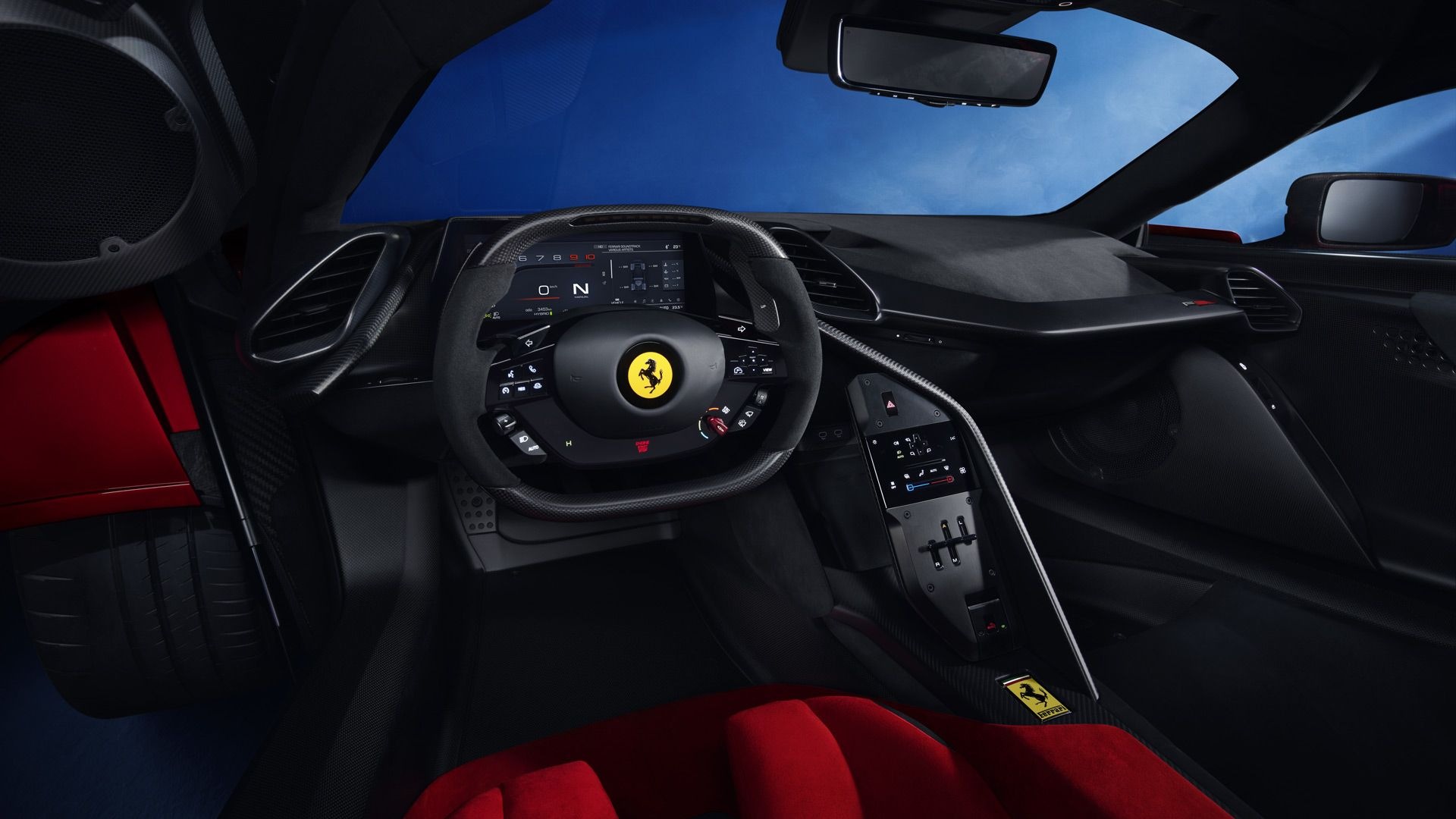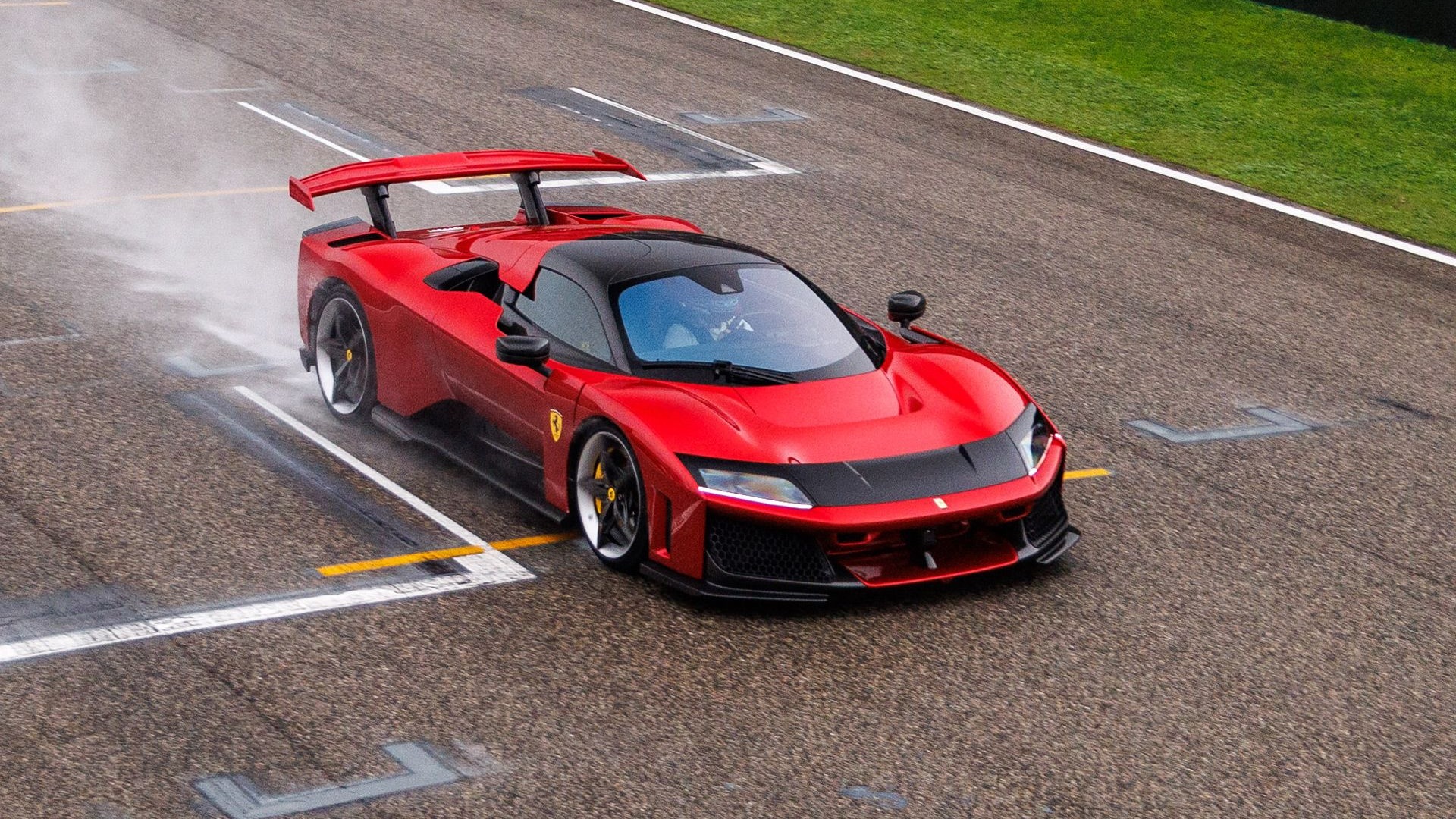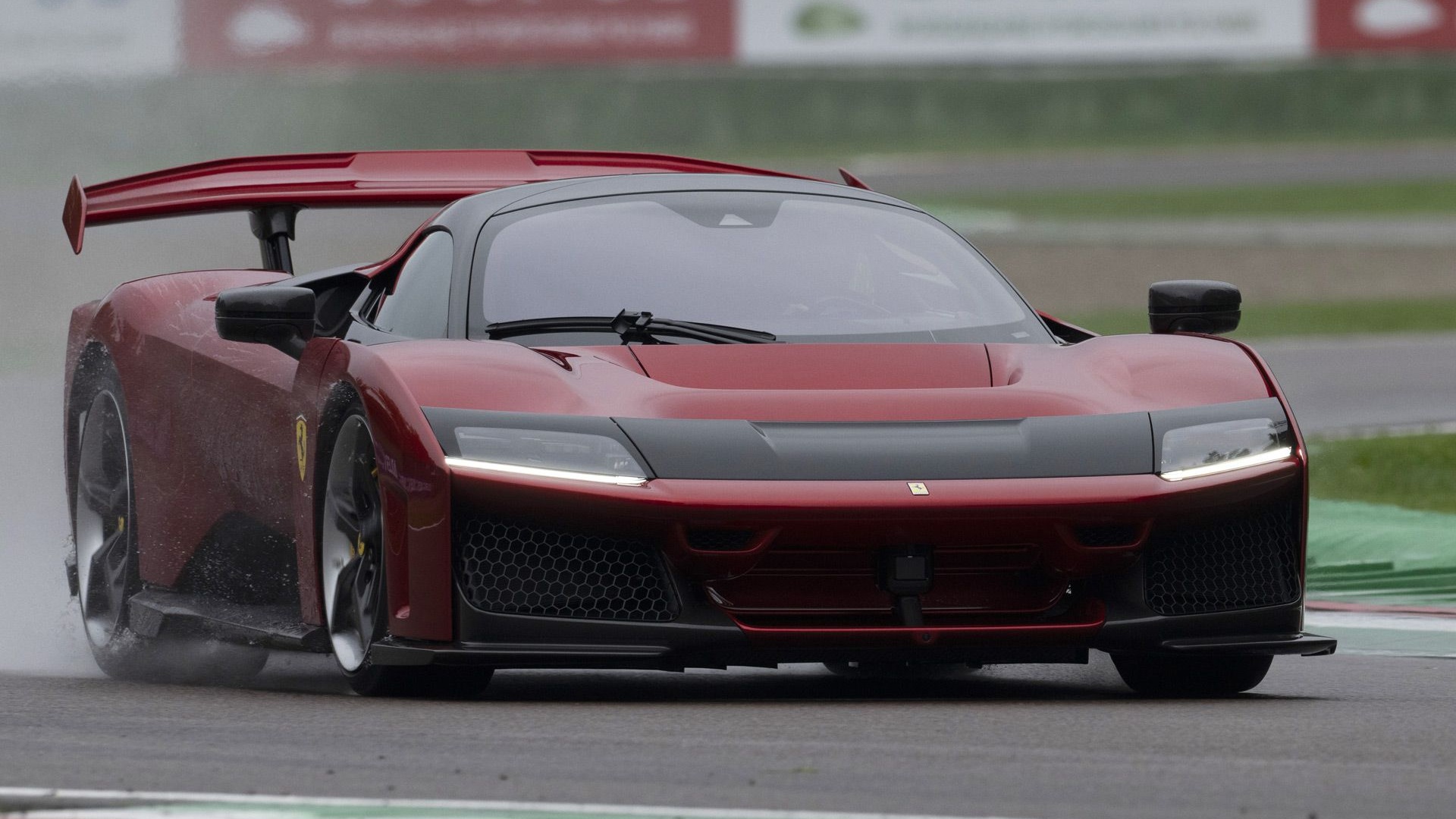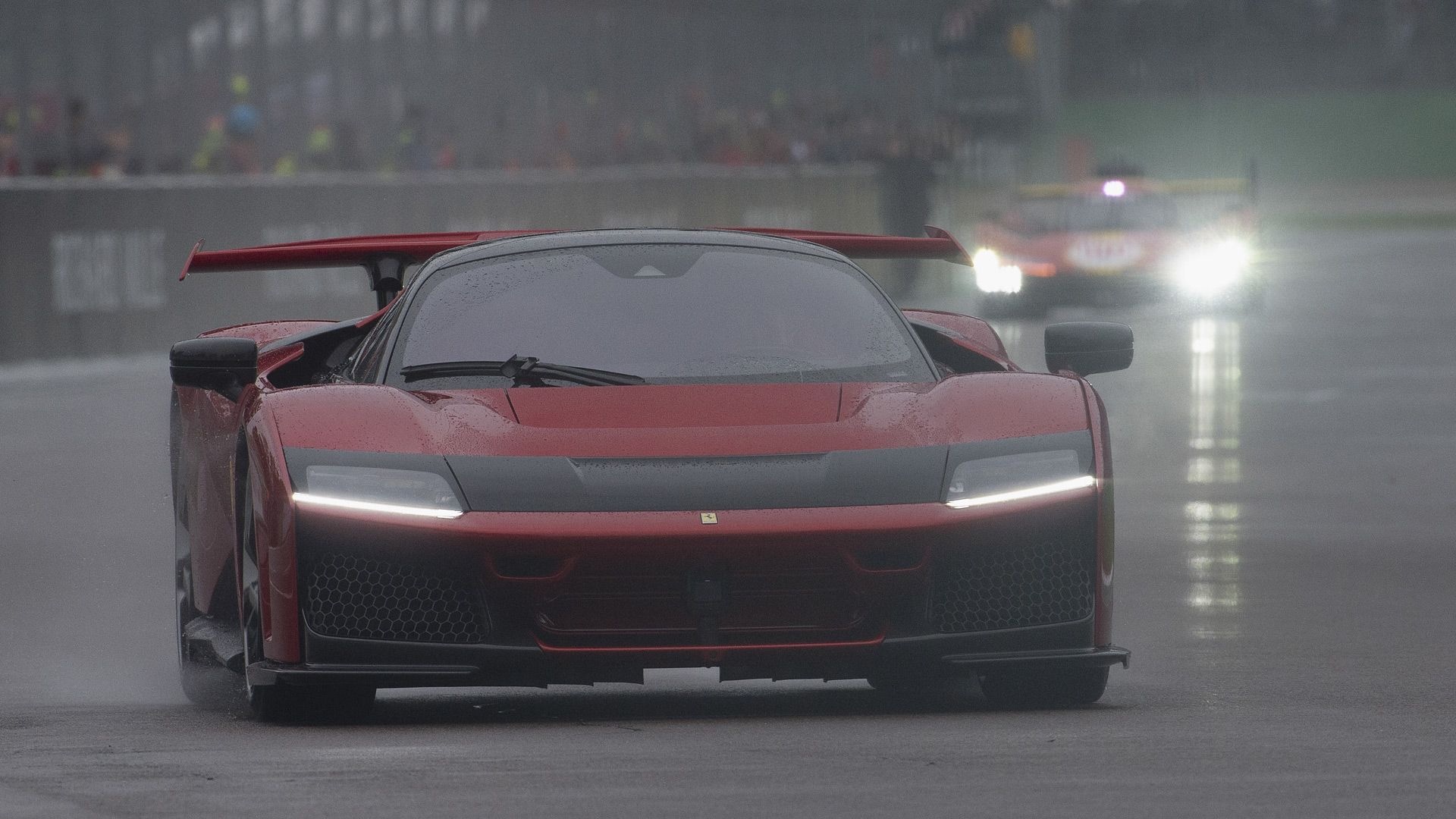- Ferrari F80 design team wanted a car with extreme proportions
- Original design called for a single-seat configuration
- V-6 was deemed Ferrari's best-performing engine
Ferrari's F80 hypercar revealed earlier in October was originally conceived as a single seater, Ferrari design chief Flavio Manzoni has revealed.
In an interview with Top Gear published on Wednesday, Manzoni said the goal for the design team was to deliver a car with extreme proportions, and described an early design with a very narrow cabin wide enough to only seat one, combined with a body made as wide as possible to fit the road.
“It was absolutely clear to me and my team that we wanted to do something absolutely futuristic and disruptive,” he said.
Eventually, a solution was found where a passenger seat could be squeezed in, but offset slightly behind the driver's seat to keep the cabin as a narrow as possible while still allowing two occupants. And to further emphasize the feel of a single seater, the driver's seat is separated from the rest of the cabin by a rising center console, a bit like in the Chevrolet Corvette.

Flavio Manzoni
This goal to be disruptive also resulted in Ferrari opting for a V-6 engine instead of a traditional V-12 for its flagship model. In the same interview with Top Gear, Ferrari marketing chief Enrico Galliera said the decision to pick the V-6 over a V-12 was “kind of easy.”
According to him, Ferrari wanted the best engine to unlock max performance, and that resulted in the V-6. The engine, a twin-turbocharged 3.0-liter V-6 derived from the engine in Ferrari's Le Mans-winning 499P LMH, makes an impressive 888 hp on its own. That's more power than what's delivered by Ferrari's V-12, and the V-6 also delivers packaging benefits because of its smaller size.
The mid-mounted engine doesn't work alone in the F80. There are three traction motors: two at the front axle, and one at the rear. The two front motors make 140 hp each while the rear motor makes 80 hp and also recovers energy under braking. The all-wheel-drive configuration is similar to what Ferrari used for the SF90 Stradale, and just like that car, the rear motor helps provide torque fill for the engine.
Ferrari plans to build 799 examples of the F80, and deliveries are due to start in 2026. The “80” in the car's name is a nod to Ferrari's 80th anniversary coming up in 2027.






